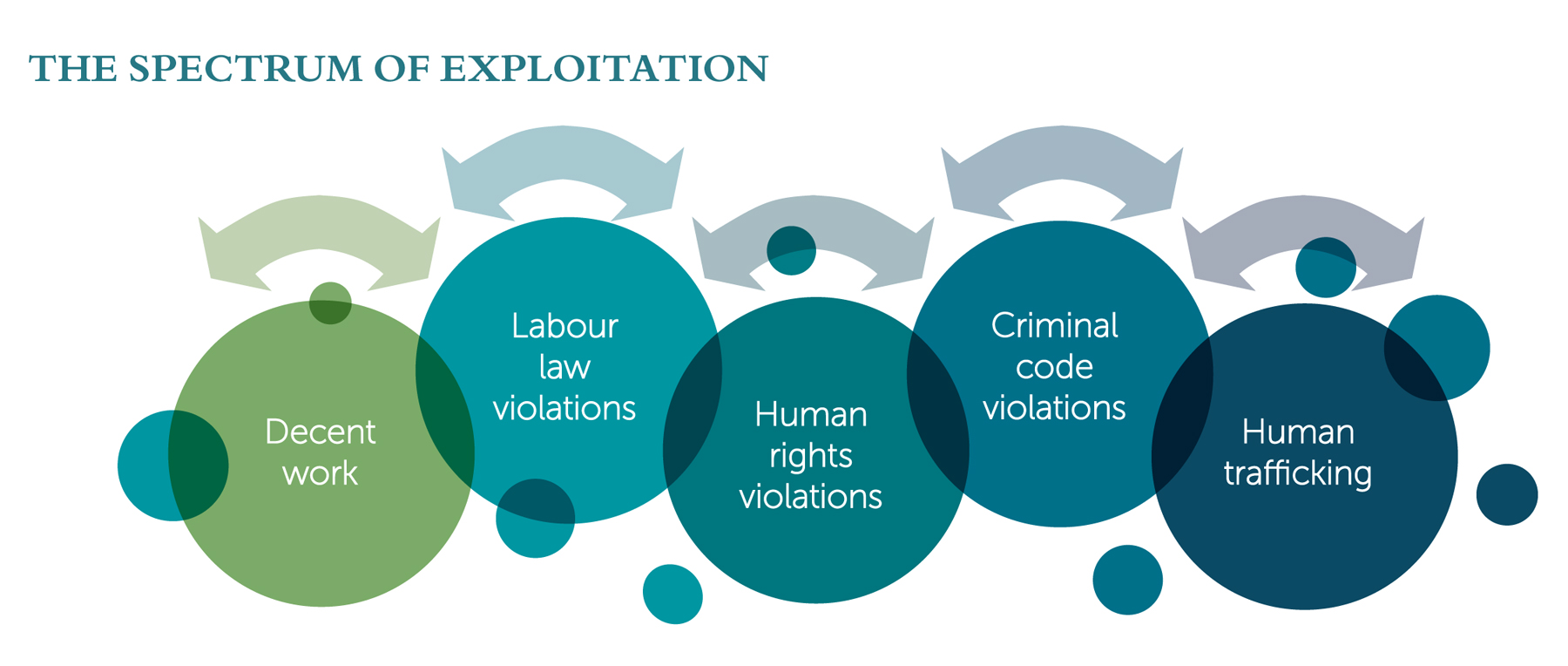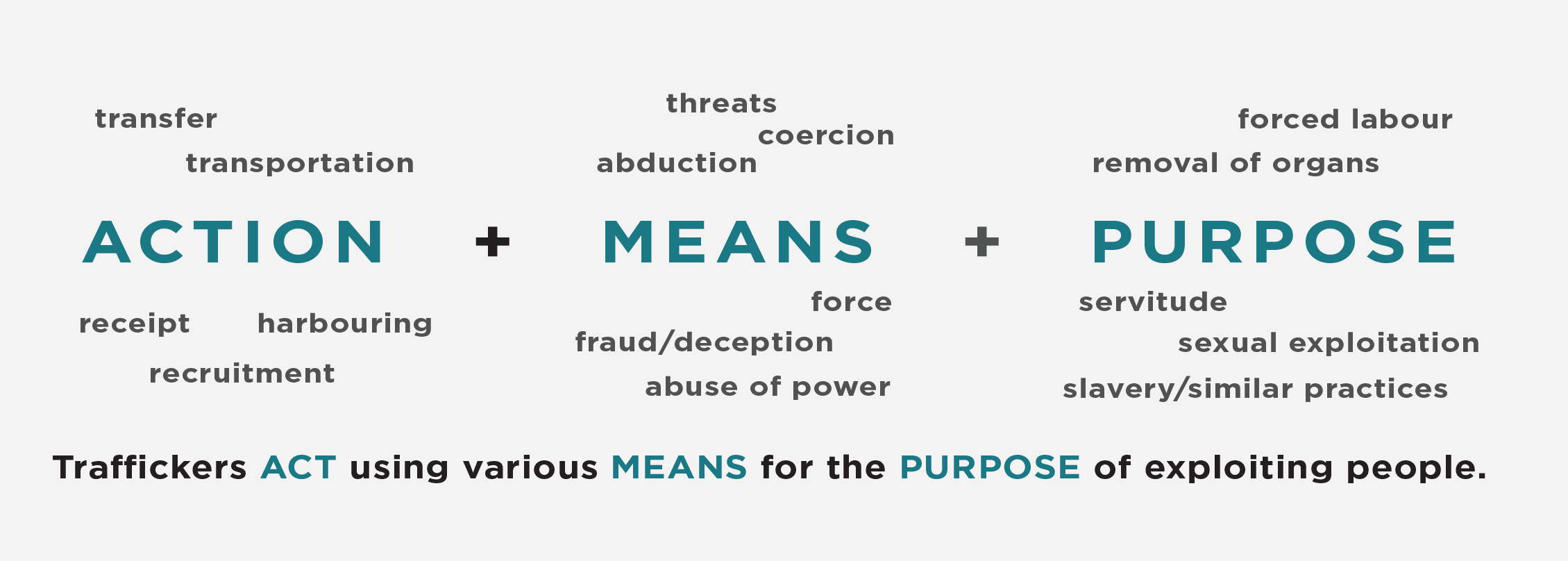Trafficking
- Involves the exploitation of people, often through forced labour. Those who are trafficked may be engaged in exploitative conditions in sex work, domestic work, or work in the service (e.g. restaurants), manufacturing, agricultural or construction sectors.
- Often involves the transportation of victims across borders or within a country. People who are far from their home communities are much easier to exploit, because of their isolation in an unfamiliar community. This is true of people brought into Canada, but also of people transported within Canada, such as aboriginal people separated from their nation.
- Exploits the vulnerable. This is why women and children are often the victims. Traffickers often rely on the very limited options available to people, especially women, in desperately poor communities. Trafficked persons are often unaware of the rights they do have and traffickers will try to keep them ignorant.
- Affects people who are first of all human beings, not victims. Those who are trafficked are individuals with their own stories and, within the constraints of their circumstances, often extremely difficult, they have made choices about their lives. They deserve respect and greater control over their own lives.
At its core, trafficking occurs when exploitation meets coercion. Yet, this is not always clear cut. As thinking around trafficking has evolved over the last decade, the CCR understands trafficking along a spectrum of exploitation, including labour and human rights violations.

Trafficking in Canada
The term 'trafficking' focuses on the international dimensions of the problem. This could lead to the misconception that trafficking is a "foreign" problem that has been imported from abroad. It is important to recognize that trafficking is a form of forced labour and that it responds to demands in Canada. It is a Canadian problem.
Canadian law criminalizes trafficking, rightly treating it as a very serious crime and imposing heavy penalties on those found guilty of trafficking. However, the only place in the Immigration and Refugee Protection Act where trafficked persons are mentioned is in the regulation which includes having been trafficked as a factor in favour of detention, including for children. There is nothing in the law to protect the rights of trafficked persons specifically.
Temporary Resident Permits
In May 2006, the Canadian government issued new guidelines for temporary residence permits for victims of human trafficking..
While the CCR welcomed the move as a step in the right direction (see CCR media release), the CCR views the TRP as problematic and of limited usefulness in protecting trafficked persons:
> They are discretionary and are not always offered to trafficked persons;
> They impose an unreasonable burden of proof on the trafficked person; and
> The mandatory involvement of law enforcement agencies has deterred some trafficked persons from applying.
See CCR Report: Temporary Resident Permits: Limits to Protection for Trafficked Persons.
Trafficking and the Exploitation of Migrant Workers
Migrant workers are particularly vulnerable to exploitation and human trafficking as they often have limited access to social protection. In Canada, the abuses and exploitation that occur in the Temporary Foreign Worker Program (TFWP) have been well documented by the CCR (see CCR Temporary Migrant Workers Campaign). Specifically, the structure of the TFWP has created opportunities for the exploitation of migrant workers, increasing their vulnerability to human trafficking. To this day, no provisions to ensure the adequate treatment and rights protection of migrant workers have been incorporated in national legislation.
Understanding Trafficking Globally and Locally
In recent years there has been an increase in discussions about the problem of trafficking. The abuses of the basic human rights of trafficked persons, who are mainly women and girls, arouse great concern. NGOs, governments, the United Nations and others have attempted to respond to the problem. However, there are many different opinions about what trafficking is, how widespread trafficking is, how to understand the problem and what needs to be done to respond to it and to address the growing restrictions against legal and safe migration that people around the world are facing. Learn more.

